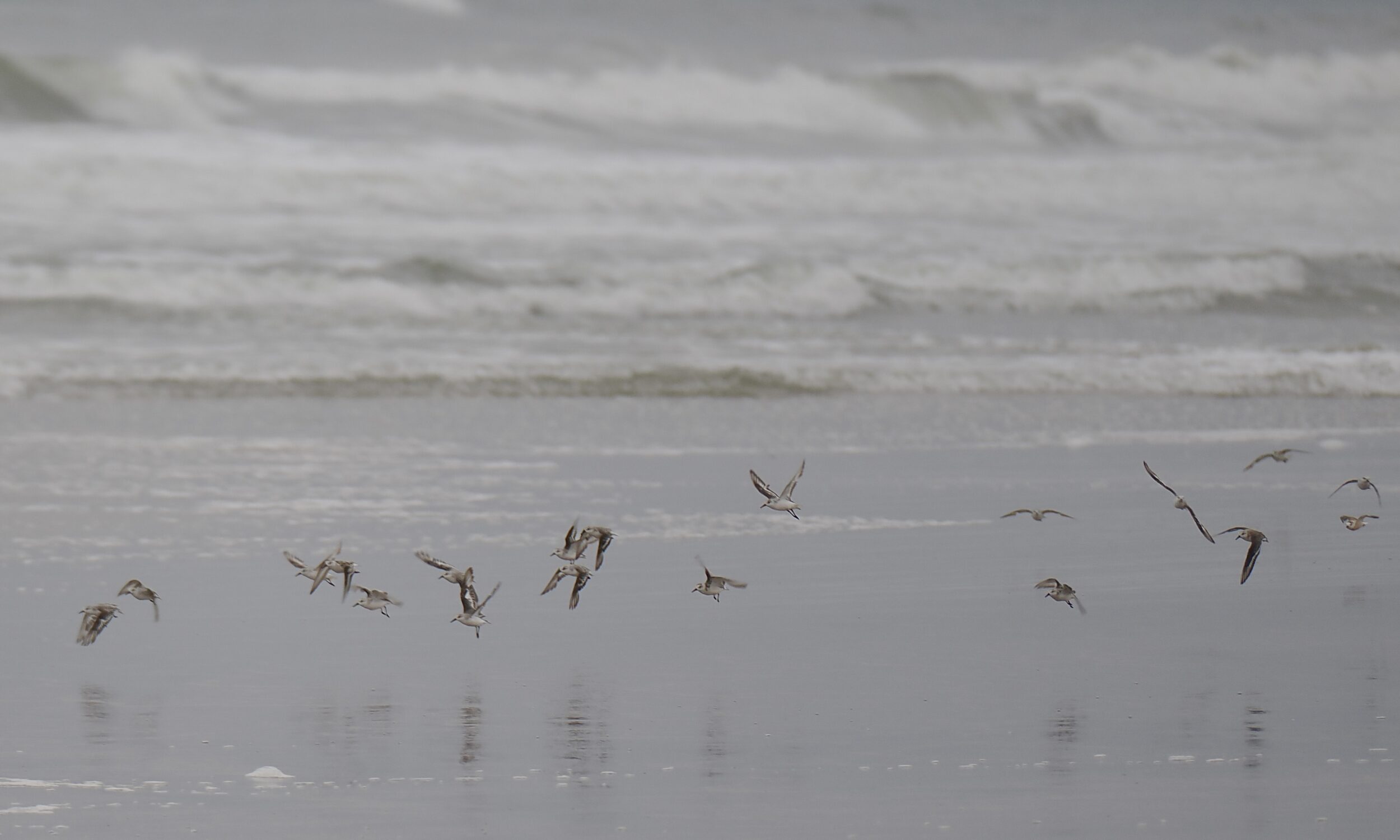The world’s oldest desert gives its name to one of the world’s sunnier, hotter, dryer (and least-populated) nations.
Q: so why would a series that celebrates the northwestern portion of the Namib Desert begin with a photo taken on an Atlantic Ocean beach, as obviously-moist air swirled around me, on a cool early evening?
A: because what makes the seaward edge of the Namib so utterly amazing is largely the result of its proximity to the chilly Atlantic.
Very rarely does rain fall on the Namib’s western edge.
However, it is a place where water – delivered directly, via the air above – is often available.
The Namib’s seaward side is one of “our” planet’s foggiest places.
Many Namib-dwellers are exquisitely well-adapted to this particular environment; some animals and plants have become expert “harvesters” of the mists which roll in, very often.
Those mists make the Namib’s western edge “surprisingly” cool, much (not all) of the time.
I took the photo at 6.25 pm on 14 November 2022, whilst standing on the Skeleton Coast shoreline, near where the Hoarusib River sometimes – rarely, very briefly – manages to flow “all the way”, into the Atlantic Ocean.
Such “river meets sea” events can be quite some years apart…or separated by just a few days; in almost every case the rain that drives them will have fallen on hilly terrain, inland, a little east of the Namib Desert.
As any Australian ought already know, rivers that are “ephemeral” are not thereby inconsequential or unimportant.
Cooper Creek and the Hoarusib River are both highly “consequential”; the latter is as much this series’ “hero” as the desert through which it flows… sometimes.
